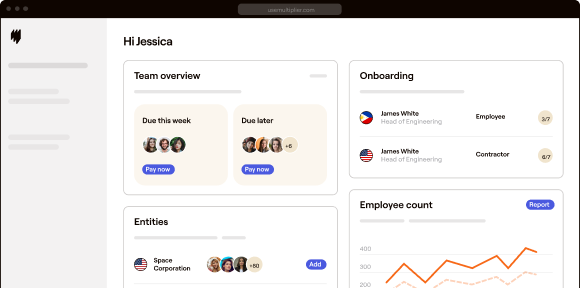In the quest for international business expansion and operational efficiency, businesses are free to pick a global mobility path of their choosing. These include exporting, licensing, franchising, turnkey projects, joint ventures, and wholly-owned subsidiaries.
Speaking of a wholly-owned subsidiary, what does it mean?
In simple terms, when an external company holds 100% of another corporation’s common stocks, the company giving up all its stocks is the wholly-owned subsidiary whereas the company owning it is the parent company.
Why Do Companies Favor a Wholly-owned Subsidiary Structure?
Setting up a wholly-owned subsidiary structure allows global mobility companies to diversify operations and strategize for market volatility, geopolitical fluctuations, and shifts in trade dynamics specific to international markets.
Furthermore, the parent company of a wholly-owned subsidiary can extend its reach and influence across diverse geographic regions and international markets.
This approach enables the subsidiary to control hiring and onboarding, distill product offerings, and cultivate a dedicated target audience, while the parent company retains comprehensive ownership and oversight.
Top four Advantages of a Wholly Owned Subsidiary
Relying on wholly-owned subsidiaries helped Toyota’s internationalization in the European market.
From starting as an exporter to Denmark to establishing Toyota Manufacturing (UK) Ltd., the Japanese automotive manufacturer diversified its offerings, boosted sales, and won loyal customers in Europe.
As the case study demonstrated above, there are several advantages of setting up a wholly-owned subsidiary, such as:
1. Greater operational control
Wholly owned subsidiaries afford greater operational control and autonomy to the parent company. Moreover, decision-making is swifter as the need to convince multiple stakeholders, as in the case of joint ventures, is eliminated. This allows companies to respond to evolving market situations rapidly.
You may also standardize quality control measures and customer experience for all markets, irrespective of the location. Additionally, you can localize your offerings to win customer trust and loyalty. What’s more, owning subsidiaries allows for efficient resource allocation and supply chain management.
With wholly-owned subsidiaries you can expand economies of scale and also cut costs by using the brand’s name to secure better deals, leveraging a global talent pool, diversifying supply chains, and gathering country-specific consumer data for product development.
2. Strategic alignment
By setting up wholly-owned subsidiaries, you essentially protect your long-term vision and core values from being influenced by region-specific conditions. Your branding strategy also maintains consistency with your strategic vision in different markets.
Strategic decisions from the HQ can be quickly transmitted across global units through wholly-owned subsidiaries, enabling timely knowledge exchange. Plus, you can minimize data breaches and prevent sensitive information and trade secrets from falling into the wrong hands.
Wholly owned subsidiaries also foster a healthy workplace culture aligned to business goals, creating an engaged and productive workforce.
3. Increased market presence
With a wholly owned subsidiary, you can establish direct connections with local markets. This interconnectedness lets you tailor products, marketing initiatives, and customer experience to suit local preferences, ultimately boosting sales.
The newfound distribution channels and customer-facing touchpoints also accomplishes consumer fulfillment and satisfaction, reinforcing brand legitimacy and reputation.
Their connection with a global brand without external interference can speak volumes about your desire to cater to their needs—great for your market standing and dedication.
4. Better financial management
Wholly-owned subsidiaries offer multinational corporations significant financial benefits.
Many countries incentivize foreign direct investment by providing tax breaks and exemptions to wholly-owned subsidiaries that create employment opportunities for local citizens. This can substantially reduce operational costs and boost profitability.
Additionally, several nations have implemented streamlined laws for repatriating profits earned by wholly-owned subsidiaries back to the parent company, minimizing bureaucratic hurdles and taxation on fund transfers.
Moreover, by mandating universal financial reporting standards across all wholly-owned subsidiaries, parent companies can ensure a consistent and consolidated view of their global financial performance.
This streamlined reporting process eliminates the need for reconciling disparate accounting practices, enhancing transparency and efficiency in financial management.
Four drawbacks of a wholly-owned subsidiary
Setting up and managing wholly-owned subsidiaries presents unique challenges, such as:
1. Higher setup costs
Setting up wholly owned subsidiaries factors in additional costs related to researching the consumer market and the regulatory landscape, managing supply chains, branding, and employment. These “additional” expenses are reduced or non-existent in alternatives like exporting and joint ventures.
It’s worth noting that costs may add up if the parent company expands to multiple countries simultaneously. Of course, the added risk of parallel expansion is having to deal with simmering social and political tensions or unfavorable macroeconomic conditions which may discourage investors from investing in newer subsidiaries.
2. Complex regulations
Operating a wholly-owned subsidiary requires adhering to numerous laws and regulations related to investments, corporate governance, taxation, labor, and infrastructure.
Navigating this complex legal landscape can be challenging. Legal experts’ intervention may be needed which can increase operational costs.
Failure to comply with these regulations can result in severe consequences, including substantial fines or even closure of the subsidiary. Such non-compliance can significantly tarnish the brand’s reputation and negatively impact consumer sentiment.
Furthermore, legal issues faced by the subsidiary can spread to the parent company, exposing the organization to more legal sanctions.
3. Potential for cultural misalignment
Heavily relying on wholly-owned subsidiaries can potentially create a disconnect between the company and its local consumers. This disconnect may arise due to a lack of localization efforts, bringing about a sense of alienation and mistrust among customers.
A parent-company-driven approach may also fail to fully understand and incorporate the local cultural and social nuances essential for enhancing the customer experience.
Moreover, this disconnect can hinder efforts to build strong relationships with local business leaders, government officials, and suppliers. The perceived distance and lack of local presence may increase the cost of acquiring new customers, rendering marketing efforts less effective in resonating with the local audience.
4. Dependency
Wholly-owned subsidiaries create greater dependencies on parent companies for capital, operations and business plans.
These dependencies restrict the maneuvering abilities of subsidiaries in local markets to adjust to market conditions and consumer preferences. The standardization of practices may backfire in certain cases where local preferences overpower a centralized approach.
Operational challenges of a wholly-owned subsidiary: Four insights for success
Managing wholly-owned subsidiaries brings significant market presence and value to customers across the world. But it also presents a few operational challenges that need to be tackled effectively.
1. Bridge the gap
The geographical and social distance between the primary business unit and subsidiaries in other countries can lead to disparate offerings, delay in decision transmission, and misalignment to collective vision.
Organizations must bridge the gap by diversifying communication channels and implementing collaboration tools. Many global HR platforms integrate collaborative tools and sustain company culture and values across business units.
2. Localize offerings
Organizations must design their offerings, including products, marketing collaterals, and customer interactions, to suit local preferences and socio-economic conditions. This helps them capture unique customer needs and win trust and loyalty among consumers.
Here, hiring locally can help. Many HR platforms help you tap into multiple local talent pools to find the most suitable talent. They also automate repetitive tasks in the hiring cycle like screening resumes, scheduling interviews, conducting assessments and rolling out offer letters.
This helps you optimize hiring costs, reduce time to hire, and free up your recruiters so they can focus more on cultural sensitivity and cross-cultural communication.
3. Ensure compliance
Every region has its own set of laws governing minimum wage, taxation, and working hours. Failing to stay updated on these regulations could result in penalties and damage to the brand’s reputation. Organizations must ensure foolproof compliance to maintain focus on meeting customer needs and facilitating expansion.
In this context, global HR software with local entities across countries can be highly useful. These solutions stay up-to-date with legal changes and ensure that the company’s HR and tax policies align with evolving regulations in different regions.
4. Track performance
Organizations should utilize data analytics tools to monitor the performance of wholly-owned subsidiaries against key performance indicators (KPIs). This will help identify areas that need improvement. However, it’s crucial to consider local market contexts when designing and implementing corrective measures.
Additionally, companies can establish mechanisms to gather feedback from local employees and customers, which can help assess performance at every stage of a subsidiary’s setup or brand campaign.
To a certain extent, organizations must decentralize operations and grant autonomy to local functionaries. This autonomy allows for cultural sensitivity and quicker decision-making tailored to the local market.
Subsidiary management for international business expansion
By partnering with international business expansion experts like Multiplier, you can simplify subsidiary management anywhere in the world.
The tech-powered global expansion platform seamlessly manages employee hiring and onboarding, global payroll, global compliance, freelancer hiring for remote teams, and visa and immigration support, to name a few, so you can focus on cultural alignment and nurturing employer-employee synergies.
As an employer of record (EOR), Multiplier acts as the legal entity on your behalf to manage risks and liabilities associated with end-to-end global workforce management.
This removes the need for you to set up individual entities for every aspect of international business expansion.
Here’s how Multiplier fuels your global mobility plans.
- Hire locally across 150+ countries, draft compliant employee contracts, offer competitive benefits and ESOPs, organize international onboarding, and more on a single, unified platform.
- Run payroll in more than 120 currencies. Offload taxation and regulatory complexities to Multiplier and ensure compliance with local labor, employment, and legalities through Multiplier’s global compliance teams and round-the-clock support.
- Ensure cultural alignment among employees distributed across the globe. Oversee your HR operations centrally to ensure greater cohesion and collaboration for diverse roles, geographies, and teams.
Confidently expand into new markets with Multiplier. Book a demo today!







